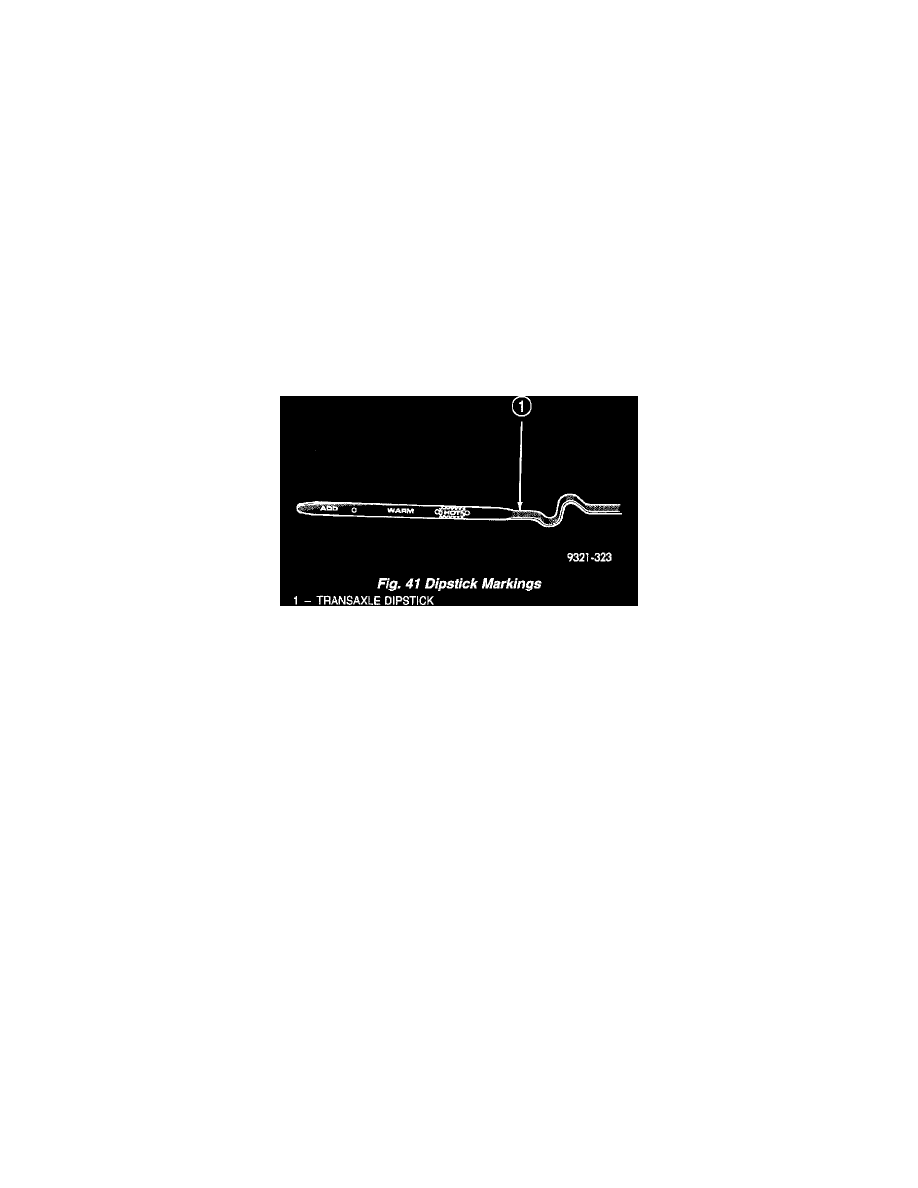300M V6-3.5L VIN G (2000)

Fluid - A/T: Service and Repair
NOTE: Refer to Maintenance, or the vehicle owner's manual, for the recommended maintenance (fluid/filter change) intervals for this transaxle.
NOTE: The 42LE Transaxle has separate transmission and differential fluid sumps. Refer to Fluid Drain and Refill-Differential for differential fluid
service.
NOTE: Only fluids of the type labeled Mopar(R) ATF +4 (Automatic Transmission Fluid) Type 9602 should be used. A filter change should be
made at the time of the transmission oil change. The magnet (on the inside of the oil pan) should also be cleaned with a clean, dry cloth.
NOTE: If the transaxle is disassembled for any reason, the fluid and filter should be changed.
FLUID/FILTER SERVICE (RECOMMENDED)
1. Raise vehicle on a hoist. Place a drain container with a large opening, under transaxle oil pan.
2. Loosen pan bolts and tap the pan at one corner to break it loose allowing fluid to drain, then remove the oil pan.
3. Install a new filter and O-ring on bottom of the valve body and tighten retaining screws to 5 Nm (40 inch lbs.).
4. Clean the oil pan and magnet. Reinstall pan using new Mopar(R) Silicone Adhesive sealant. Tighten oil pan bolts to 19 Nm (165 inch lbs.).
5. Pour four quarts of Mopar(R) ATF +4 (Automatic Transmission Fluid) Type 9602 through the dipstick opening.
6. Start engine and allow to idle for at least one minute. Then, with parking and service brakes applied, move selector lever momentarily to each
position, ending in the park or neutral position.
Fig. 41
7. Check the transaxle fluid level and add an appropriate amount to bring the transaxle fluid level to 3mm (1/8 inch) below the "ADD" mark on the
dipstick (Fig. 41).
8. Recheck the fluid level after the transaxle has reached normal operating temperature (180°F.).
9. To prevent dirt from entering transaxle, make certain that dipstick is fully seated into the dipstick opening.
ALTERNATIVE MAINTENANCE METHODS
TRANSAXLE FLUID EXCHANGER METHOD
CAUTION: The use of any fluid exchanger that introduces additives into the transaxle is not recommended.
1. To perform the transaxle fluid exchange, the transaxle must be at operating temperature. Drive the vehicle until it reaches full operating
temperature.
2. Obtain a suitable transaxle fluid exchanger and verify the tank is clean and dry.
3. Fill the tank to the recommended fill capacity with Mopar(R) ATF +4 Type 9602.
4. Connect the machine to the vehicle following the manufacturers instructions. Perform the exchange procedure following the instructions provided
with the machine.
5. Once machine has completed the fluid exchange. Check the fluid level and condition and fill to proper level with Mopar(R) ATF +4 Type 9602.
Refer to Fluid Level and Condition Check in Service Procedures for the proper fluid "top-off" procedure.
NOTE: Verify that the transaxle cooler lines are tightened to proper specifications. Cooler line torque specification is 2 Nm (18 inch lbs.).
DIPSTICK TUBE FLUID SUCTION METHOD
1. When performing the fluid suction method, make sure the transaxle is at full operating temperature.
2. To perform the dipstick tube fluid suction method, use a suitable fluid suction device (Vacula(TM) or equivalent).
3. Insert the fluid suction line into the dipstick tube.
NOTE: Verify that the suction line is inserted to the lowest point of the transaxle oil pan. This will ensure complete evacuation of the fluid in the
pan.
